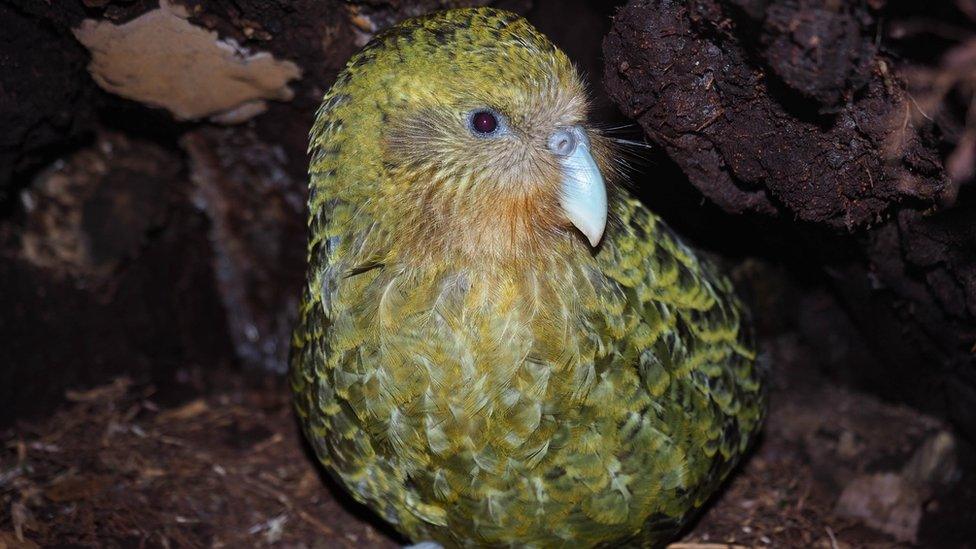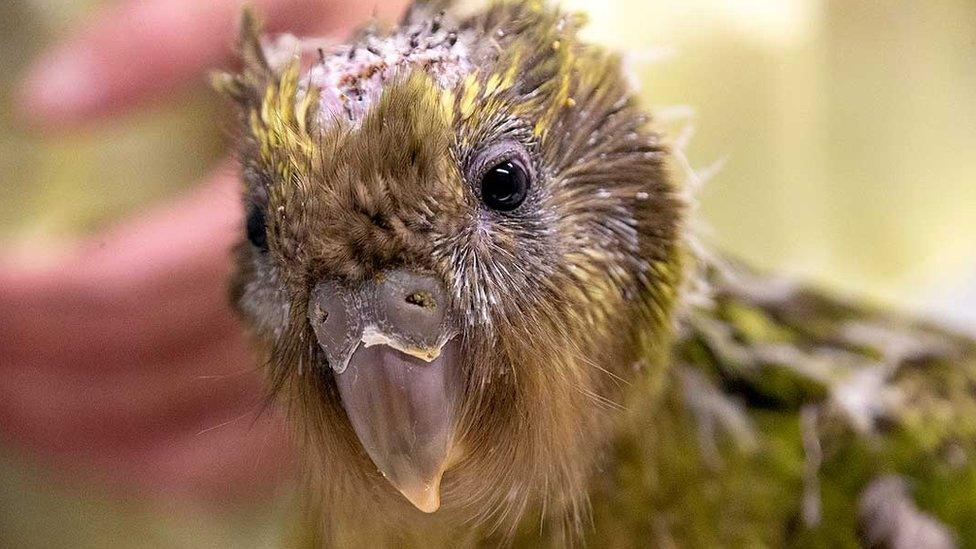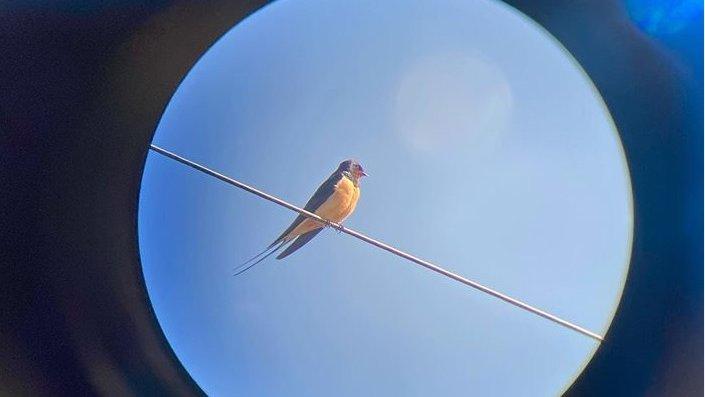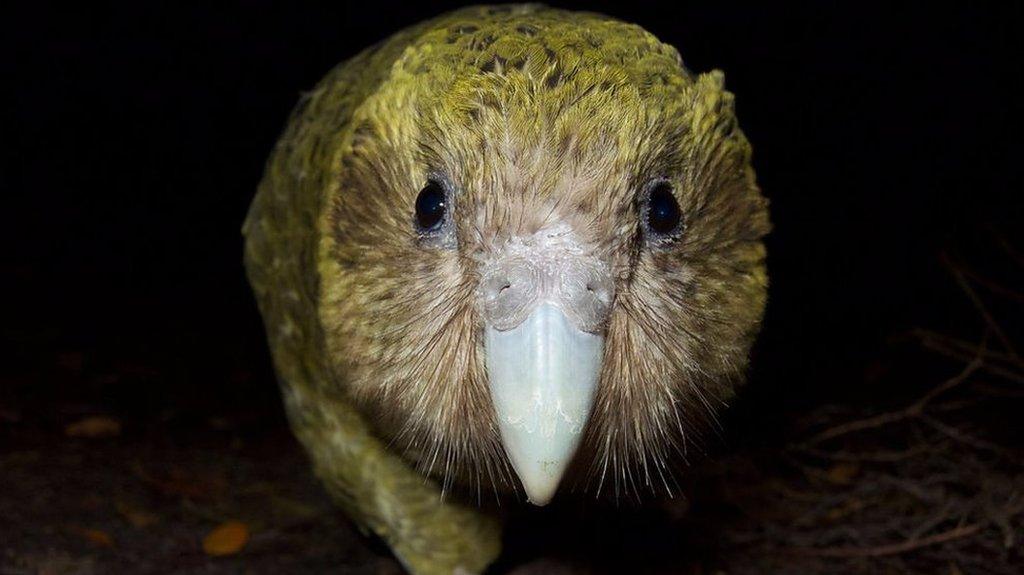How new wildlife drones are helping to protect the endangered kakapo bird
- Published
- comments

The endangered kakapo bird is nearly extinct - but scientists have come up with a new way of keeping track of them.
Special drones can fly near the birds and monitor their activity, helping scientists to keep an eye on their health and learn what they're getting up to.
The kakapo can only be found in New Zealand, and there are only 211 of them left.
The new drones locate the birds in record time and monitor them more accurately than other methods.

The kakapo bird population is so small that each one of them has been given a name, including Ruth, Hoki, Suzanne and Zephyr!
Hunting, the loss of their natural habitat, and a rare fungal infection mean kakapo numbers have declined - but scientists hope that if they can learn more about them there are ways they could help.
All of the birds are tagged with radio monitors, but previously scientists would have to track them down on foot - a process that was very slow and time consuming.
The drones have only been used on a trial programme so far, but scientists say they can track and trace large numbers of kakapo at the same time - up to 40 animals on one flight!
Kakapo's are the world's only flightless parrots - they use their wings for balance and support rather than flying
They have been described as the 'party parrot'
It's the world's fattest parrot! They can weigh up to 9lbs
A fungal infection is affecting the population of the birds
Dr Andrew Digby is the scientific adviser for the Department of Conservation's kakapo recovery programme.
He said that drones are: "Less intensive and less invasive. Having people walking around the Island causes a lot of disturbance for the animals, but a drone 100m up in the air is hardly noticeable."
- Published14 April 2020

- Published18 April 2019

